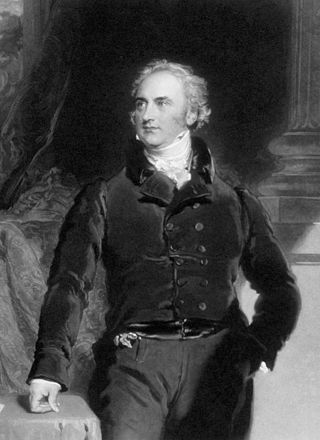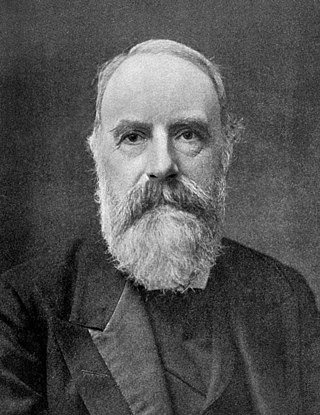
Peter Mark Roget was a British physician, natural theologian, lexicographer, and founding secretary of The Portico Library. He is best known for publishing, in 1852, the Thesaurus of English Words and Phrases, a classified collection of related words. He also read a paper to the Royal Society about a peculiar optical illusion in 1824, which is often regarded as the origin of the persistence of vision theory that was later commonly used to explain apparent motion in film and animation.
The Chemical Society was a scientific society formed in 1841 by 77 scientists as a result of increased interest in scientific matters. Chemist Robert Warington was the driving force behind its creation.

Sir Astley Paston Cooper, 1st Baronet was a British surgeon and anatomist, who made contributions to otology, vascular surgery, the anatomy and pathology of the mammary glands and testicles, and the pathology and surgery of hernia.

Frederick William Pavy was a British physician and physiologist and the discoverer of Pavy disease, a cyclic or recurrent physiologic albuminuria.

The Royal Society of Medicine (RSM) is a medical society based at 1 Wimpole Street, London, UK. It is a registered charity, with admission through membership.

The Royal Entomological Society is devoted to the study of insects. Its aims are to disseminate information about insects and improving communication between entomologists.

Rear admiral Sir William Watson Cheyne, 1st Baronet, was a Scottish surgeon and bacteriologist who pioneered the use of antiseptic surgical methods in the United Kingdom.

The Medical Society of London is one of the oldest surviving medical societies in the United Kingdom.
The Pathological Society of London was founded in 1846 for the "cultivation and promotion of pathology by the exhibition and description of specimens, drawings, microscopic preparations, casts or models of morbid parts."
The Epidemiological Society of London was a British medical society founded in 1850 with the objective of investigating the causes and conditions which influence the origin, propagation, mitigation, and prevention of epidemic disease. In 1907 it merged with the Royal Medical and Chirurgical Society of London and became a part of the Royal Society of Medicine as the Epidemiological Section and then Epidemiology and Public Health section.
The Clinical Society of London was founded in London in 1868 and merged in 1907 with the Royal Medical and Chirurgical Society of London to form the Royal Society of Medicine (RSM).

Sir William Selby Church, 1st Baronet, was a British physician to St Bartholomew's Hospital, president of the Royal College of Physicians from 1899 to 1905 and president of the Royal Society of Medicine from 1907 to 1909 and also in 1893. He is best remembered for his ability to direct policy of the associations he belonged to.
The Obstetrical Society of London was formed in 1858 and merged in 1907 with the Royal Medical and Chirurgical Society of London to form the Royal Society of Medicine (RSM).

Sir William Bartlett Dalby was a British aural surgeon and otologist, who was knighted in 1886.

William Saunders FRS FRSE was a Scottish physician who was the first president of the Royal Medical and Chirurgical Society.

Timothy Holmes FRCS was an English surgeon, known as the editor of several editions of Gray's Anatomy.

Sir John Young Walker MacAlister was a Scottish journalist, editor, librarian, and promoter of medical postgraduate education. He was the Secretary of the Royal Society of Medicine from 1901 to 1925 and one of the promoters of the Society's formation.

The History of Medicine Society (HoMS), at the Royal Society of Medicine (RSM), London, was founded by Sir William Osler in 1912, and later became one of the four founder medical societies of the British Society for the History of Medicine.

Arthur Logan Turner FRCSEd FRSE LLD was a Scottish surgeon, who specialised in diseases of ear, nose and throat (ENT) and was one of the first surgeons to work at the purpose-built ENT Pavilion at the Royal Infirmary of Edinburgh. During his surgical career he published a series of clinical papers and wrote a textbook of ENT surgery which proved popular around the world and ran to several editions. After retiring from surgical practice he pursued his interest in the history of medicine writing a biography of his father and histories of the Royal Infirmary of Edinburgh and the University of Edinburgh. As his father had been before him, he was elected President of the Royal College of Surgeons of Edinburgh. His collection of pathological specimens was donated to Surgeon's Hall Museum in Edinburgh..














